Home
Website Underconstruction
HubBuckets Organization | Cosmology Division of HubBucket Inc ("HubBucket")
Our research includes Cosmology, Theoretical Cosmology, Quantum Cosmology, Physical Cosmology, Observational Cosmology, Black Hole Cosmology, and related subjects and topics
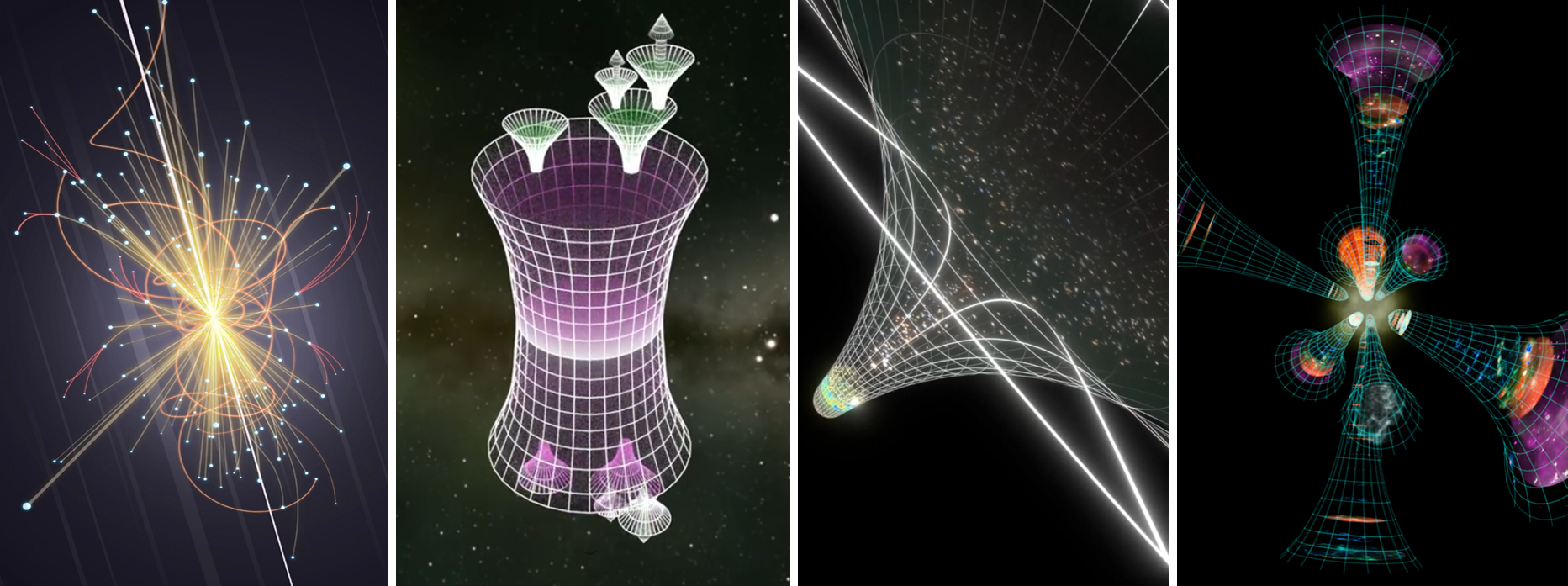
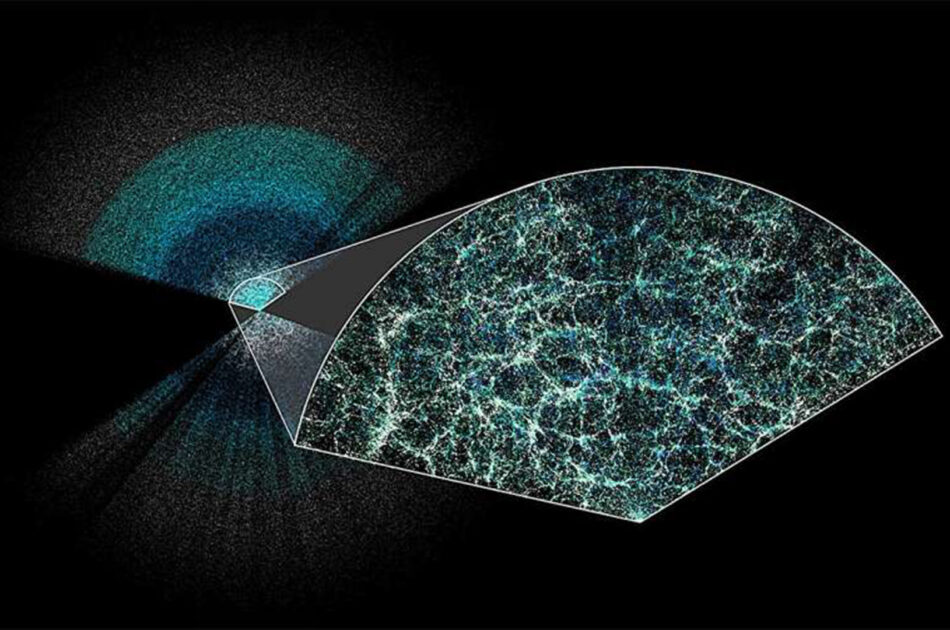
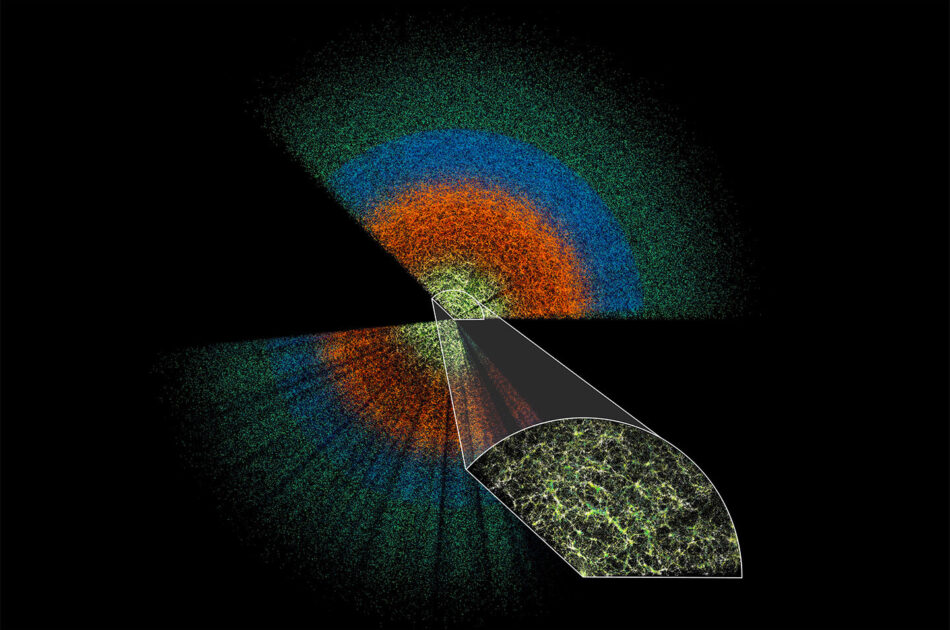
HubBuckets Organization ("HubBuckets") is a research division of HubBucket Inc ("HubBucket"). HubBucket Inc is a Self-Funded Scientific Research Organization, and a Self-Funded Research Ecosystem, that is located in New York State (NYS); Brooklyn, NY (USA). HubBucket Inc (website): www.hubbucket.xyz
Theoretical Cosmology
Since the Universe is expanding, it must have been denser in the past. But even before we get all the way back to the Big Bang, there must have been a time when stars like our Sun or galaxies like our own Milky Way did not exist because the Universe was denser than these objects are. We therefore face the important question about our origins: how and when did the first stars and galaxies form? Harvard faculty study theoretically the formation of the first galaxies and their environmental impact in terms of the reionization of the intergalactic medium. State-of-the-art numerical simulations are used to predict the formation of stars and black holes within galaxies throughout cosmic history. These predictions will be tested over the upcoming decade through deep observations with the next generation of large-aperture infrared telescopes as well as low-frequency radio mapping of the 21-cm line of hydrogen.
Cosmology
Cosmology is the study of the Universe's origin, evolution, and large-scale structure. It encompasses the study of the universe from the Big Bang to its present state and future. Cosmologists investigate questions about the Universe's beginnings, how it has changed over time, its composition, and its ultimate fate.
Cosmology (from Ancient Greek κόσμος (Cosmos) 'the universe, the world' and λογία (logia) 'study of') is a branch of Physics and Metaphysics dealing with the nature of the Universe, the Cosmos. The term Cosmology was first used in English in 1656 in Thomas Blount's Glossographia, with the meaning of "a speaking of the world". In 1731, German Philosopher Christian Wolff used the term Cosmology in Latin (cosmologia) to denote a branch of Metaphysics that deals with the general nature of the physical world. Religious or Mythological Cosmology is a body of beliefs based on Mythological, Religious, and Esoteric literature and traditions of Creation Myths and Eschatology. In the science of Astronomy, Cosmology is concerned with the study of the chronology of the Universe.
Physical Cosmology is the study of the observable Universe's origin, its large-scale structures and dynamics, and the ultimate fate of the Universe, including the laws of science that govern these areas. It is investigated by scientists, including Astronomers and Physicists, as well as philosophers, such as metaphysicians, philosophers of physics, and philosophers of space and time. Because of this shared scope with philosophy, theories in physical cosmology may include both scientific and non-scientific propositions and may depend upon assumptions that cannot be tested. Physical Cosmology is a sub-branch of Astronomy that is concerned with the Universe as a whole. Modern Physical Cosmology is dominated by the Big Bang Theory which attempts to bring together observational astronomy and particle physics; more specifically, a standard parameterization of the Big Bang with Dark Matter and dark energy, known as the Lambda-CDM model.
Theoretical Astrophysicist David N. Spergel has described Cosmology as a "Historical Science" because "when we look out in space, we look back in time" due to the finite nature of the speed of light.
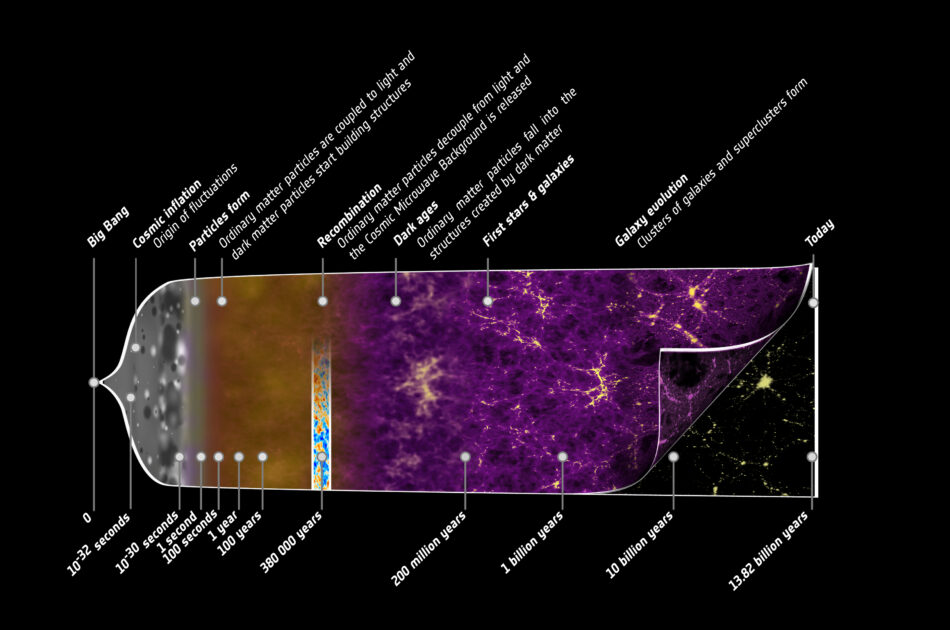
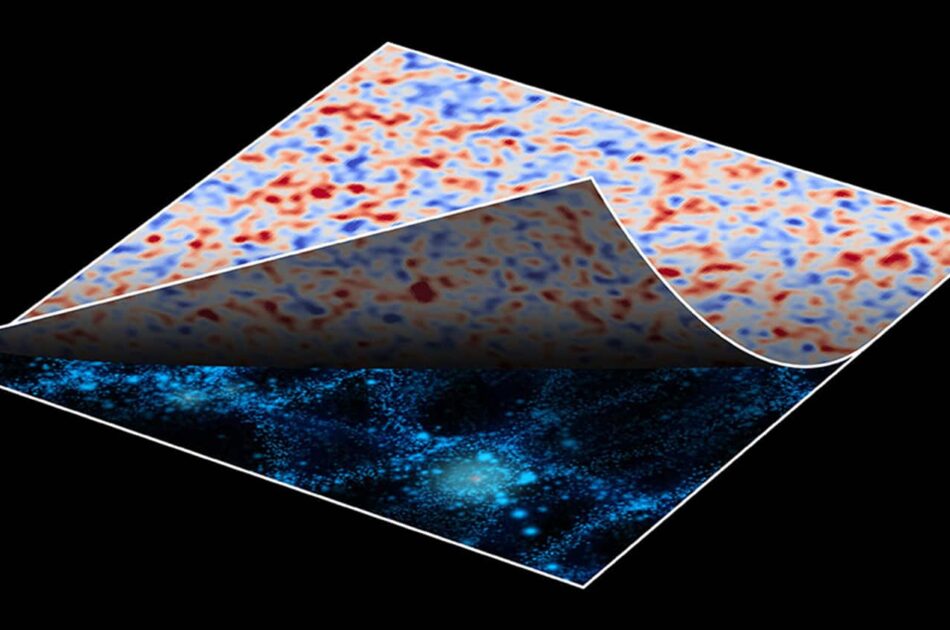
Physical Cosmology
Physical cosmology is the branch of Physics and Astrophysics that deals with the study of the physical origins and evolution of the Universe. It also includes the study of the nature of the Universe on a large scale. In its earliest form, it was what is now known as "Celestial Mechanics," the study of the heavens. Greek philosophers Aristarchus of Samos, Aristotle, and Ptolemy proposed different Cosmological Theories. The geocentric Ptolemaic system was the prevailing theory until the 16th century when Nicolaus Copernicus, and subsequently Johannes Kepler and Galileo Galilei, proposed a Heliocentric System. This is one of the most famous examples of epistemological rupture in Physical Cosmology.
Isaac Newton's Principia Mathematica, published in 1687, was the first description of the law of universal gravitation. It provided a physical mechanism for Kepler's laws and also allowed the anomalies in previous systems, caused by gravitational interaction between the planets, to be resolved. A fundamental difference between Newton's Cosmology and those preceding it was the Copernican principle—that the bodies on Earth obey the same physical laws as all celestial bodies. This was a crucial philosophical advance in Physical Cosmology.
Modern Scientific Cosmology is widely considered to have begun in 1917 with Albert Einstein's publication of his final modification of General Relativity in the paper "Cosmological Considerations of the General Theory of Relativity" (although this paper was not widely available outside of Germany until the end of World War I). General Relativity prompted Cosmogonists such as Willem de Sitter, Karl Schwarzschild, and Arthur Eddington to explore its astronomical ramifications, which enhanced the ability of Astronomers to study very distant objects. Physicists began changing the assumption that the Universe was static and unchanging. In 1922, Alexander Friedmann introduced the idea of an expanding Universe that contained moving matter.
In parallel to this dynamic approach to Cosmology, one long-standing debate about the structure of the Cosmos was coming to a climax – the Great Debate (1917 to 1922) – with early Cosmologists such as Heber Curtis and Ernst Öpik determining that some nebulae seen in telescopes were separate galaxies far distant from our own. While Heber Curtis argued for the idea that Spiral Nebulae were star systems in their own right as island universes, Mount Wilson astronomer Harlow Shapley championed the model of a cosmos made up of the Milky Way star system only. This difference of ideas came to a climax with the organization of the Great Debate on 26 April 1920 at the meeting of the U.S. National Academy of Sciences in Washington, D.C. The debate was resolved when Edwin Hubble detected Cepheid Variables in the Andromeda Galaxy in 1923 and 1924.
Their distance established spiral nebulae well beyond the edge of the Milky Way.
Subsequent modelling of the Universe explored the possibility that the Cosmological Constant, introduced by Einstein in his 1917 paper, may result in an expanding Universe, depending on its value. Thus the Big Bang model was proposed by the Belgian priest Georges Lemaître in 1927 which was subsequently corroborated by Edwin Hubble's discovery of the redshift in 1929 and later by the discovery of the Cosmic Microwave Background (CMB) radiation by Arno Penzias and Robert Woodrow Wilson in 1964. These findings were a first step to rule out some of many alternative Cosmologies.
Since around 1990, several dramatic advances in Observational Cosmology have transformed Cosmology from a largely speculative science into a predictive science with precise agreement between theory and observation. These advances include observations of the microwave background from the COBE, WMAP and Planck satellites, large new galaxy redshift surveys including 2dfGRS and SDSS, and observations of distant supernovae and Gravitational Lensing. These observations matched the predictions of the Cosmic Inflation Theory, a modified Big Bang theory, and the specific version known as the Lambda-CDM model. This has led many to refer to modern times as the "Golden Age of Cosmology".
In 2014, the BICEP2 collaboration claimed that they had detected the imprint of Gravitational Waves in the Cosmic Microwave Background (CMB). However, this result was later found to be spurious: the supposed evidence of Gravitational Waves was in fact due to interstellar dust.
On 1 December 2014, at the Planck 2014 meeting in Ferrara, Italy, Astronomers reported that the Universe is 13.8 Billion Years old and composed of 4.9% atomic matter, 26.6% Dark Matter and 68.5% Dark Energy.
Observational Cosmology
Observational Cosmology is the study of the structure, the evolution and the origin of the Universe through observation, using instruments such as telescopes and Cosmic Ray Detectors.
Early Observations
The science of Physical Cosmology as it is practiced today had its subject material defined in the years following the Shapley-Curtis debate when it was determined that the Universe had a larger scale than the Milky Way Galaxy. This was precipitated by observations that established the size and the dynamics of the Cosmos that could be explained by Albert Einstein's General Theory of Relativity. In its infancy, Cosmology was a speculative science based on a very limited number of observations and characterized by a dispute between steady state theorists and promoters of Big Bang Cosmology. It was not until the 1990s and beyond that the astronomical observations would be able to eliminate competing theories and drive the science to the "Golden Age of Cosmology" which was heralded by David Schramm at a National Academy of Sciences colloquium in 1992.
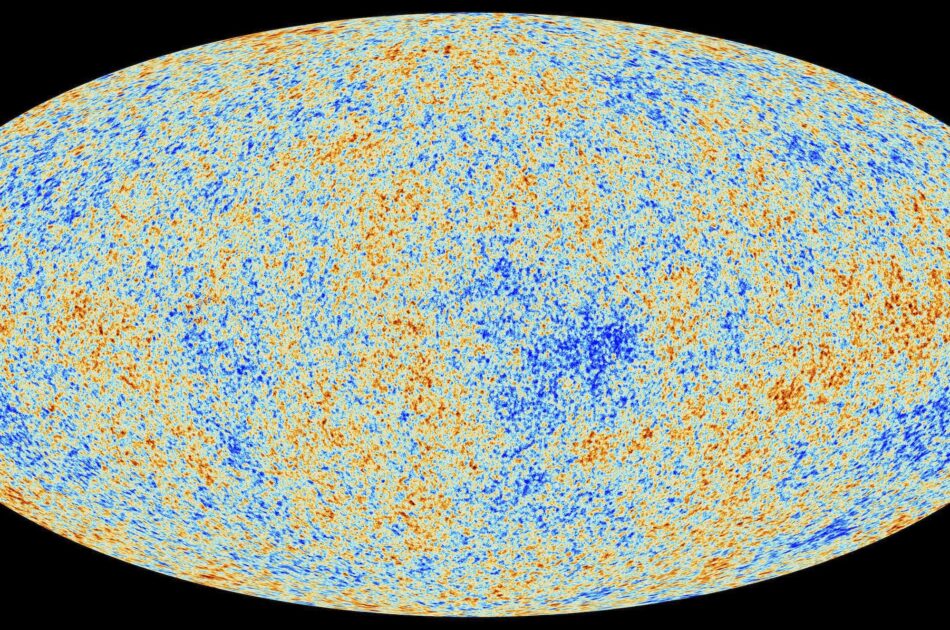
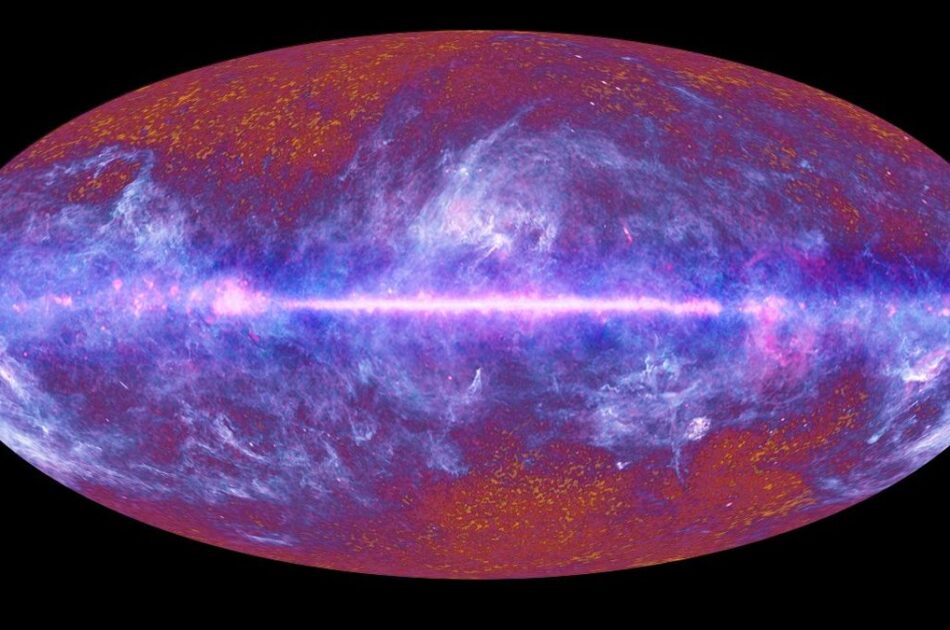
Hubble's Law and the Cosmic Distance Ladder
Distance measurements in Astronomy have historically been and continue to be confounded by considerable measurement uncertainty. In particular, while stellar parallax can be used to measure the distance to nearby stars, the observational limits imposed by the difficulty in measuring the minuscule Parallaxes associated with objects beyond our Galaxy meant that Astronomers had to look for alternative ways to measure cosmic distances. To this end, a standard candle measurement for Cepheid variables was discovered by Henrietta Swan Leavitt in 1908 which would provide Edwin Hubble with the rung on the cosmic distance ladder he would need to determine the distance to Spiral Nebula. Hubble used the 100-inch Hooker Telescope at Mount Wilson Observatory to identify individual Stars in those Galaxies, and determine the distance to the Galaxies by isolating individual Cepheids. This firmly established the Spiral Nebula as being objects well outside the Milky Way Galaxy. Determining the distance to "Island Universes", as they were dubbed in the popular media, established the scale of the Universe and settled the Shapley-Curtis debate once and for all.
In 1927, by combining various measurements, including Hubble's distance measurements and Vesto Slipher's determinations of redshifts for these objects, Georges Lemaître was the first to estimate a constant of proportionality between Galaxies' distances and what was termed their "Recessional Velocities", finding a value of about 600 km/s/Mpc. He showed that this was theoretically expected in a Universe model based on General Relativity. Two years later, Hubble showed that the relation between the distances and velocities was a positive correlation and had a slope of about 500 km/s/Mpc. This correlation would come to be known as Hubble's law and would serve as the observational foundation for the expanding universe theories on which cosmology is still based. The publication of the observations by Slipher, Wirtz, Hubble and their colleagues and the acceptance by the theorists of their theoretical implications in light of Einstein's General Theory of Relativity is considered the beginning of the modern science of Cosmology.
Nuclide Abundances
Determination of the cosmic abundance of elements has a history dating back to early spectroscopic measurements of light from astronomical objects and the identification of emission and absorption lines which corresponded to particular electronic transitions in chemical elements identified on Earth. For example, the element Helium was first identified through its spectroscopic signature in the Sun before it was isolated as a gas on Earth.
Computing relative abundances was achieved through corresponding spectroscopic observations to measurements of the elemental composition of meteorites.
Detection of the Cosmic Microwave Background (CMB)
A Cosmic Microwave Background (CMB) was predicted in 1948 by George Gamow and Ralph Alpher, and by Alpher and Robert Herman as due to the hot Big Bang model. Moreover, Alpher and Herman were able to estimate the temperature, but their results were not widely discussed in the community. Their prediction was rediscovered by Robert Dicke and Yakov Zel'dovich in the early 1960s with the first published recognition of the CMB radiation as a detectable phenomenon appeared in a brief paper by Soviet Astrophysicists A. G. Doroshkevich and Igor Novikov, in the spring of 1964. In 1964, David Todd Wilkinson and Peter Roll, Dicke's colleagues at Princeton University, began constructing a Dicke radiometer to measure the Cosmic Microwave Background (CMB). In 1965, Arno Penzias and Robert Woodrow Wilson at the Crawford Hill location of Bell Telephone Laboratories in nearby Holmdel Township, New Jersey had built a Dicke radiometer that they intended to use for Radio Astronomy and satellite communication experiments. Their instrument had an excess 3.5 K antenna temperature which they could not account for. After receiving a telephone call from Crawford Hill, Dicke famously quipped: "Boys, we've been scooped." A meeting between the Princeton and Crawford Hill groups determined that the antenna temperature was indeed due to the microwave background. Penzias and Wilson received the 1978 Nobel Prize in Physics for their discovery.
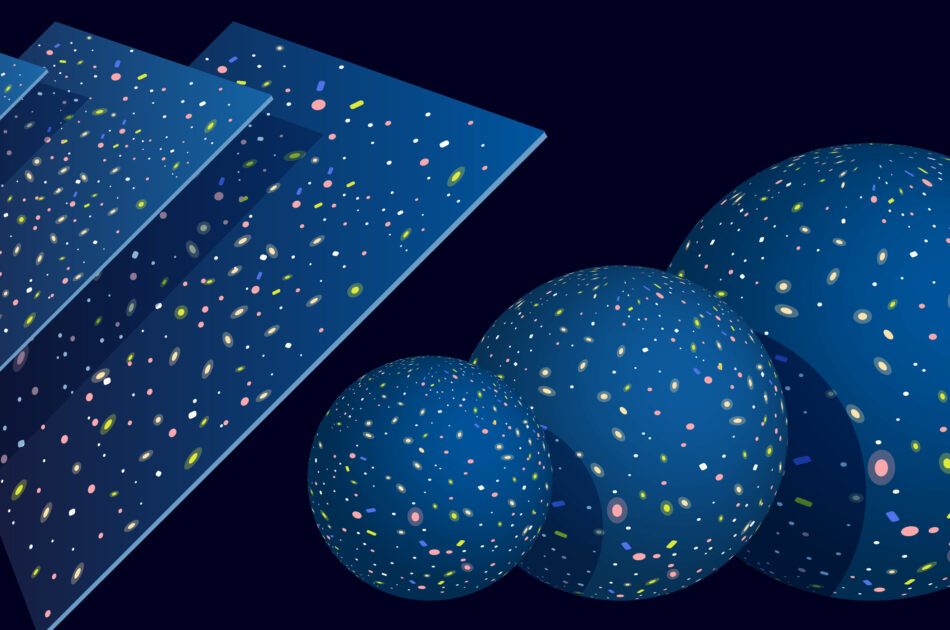
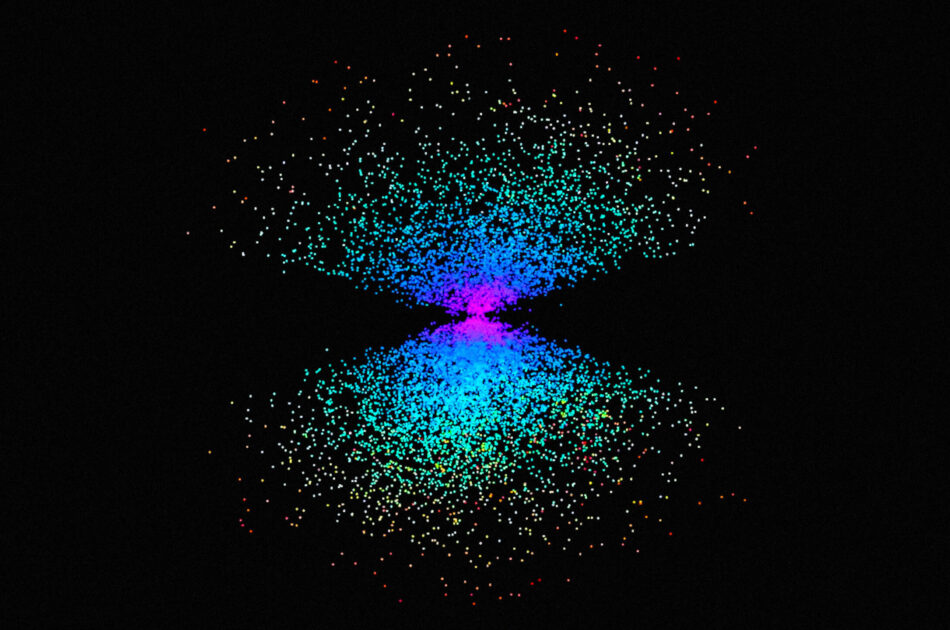
Modern Observations
Today, Observational Cosmology continues to test the predictions of Theoretical Cosmology and has led to the refinement of Cosmological Models. For example, the observational evidence for Dark Matter has heavily influenced theoretical modeling of structure and Galaxy formation. When trying to calibrate the Hubble diagram with accurate Supernova standard candles, observational evidence for Dark Energy was obtained in the late 1990s. These observations have been incorporated into a six-parameter framework known as the Lambda-CDM model which explains the evolution of the Universe in terms of its constituent material. This model has subsequently been verified by detailed observations of the Cosmic Microwave Background (CMB), especially through the WMAP experiment.
Included here are the modern observational efforts that have directly influenced cosmology.
Redshift Surveys
With the advent of automated telescopes and improvements in spectroscopes, a number of collaborations have been made to map the universe in redshift space. By combining redshift with angular position data, a redshift survey maps the 3D distribution of matter within a field of the sky. These observations are used to measure properties of the large-scale structure of the Universe. The Great Wall, a vast supercluster of Galaxies over 500 Million Light-Years wide, provides a dramatic example of a large-scale structure that redshift surveys can detect.[
The first redshift survey was the CfA Redshift Survey, started in 1977 with the initial data collection completed in 1982. More recently, the 2dF Galaxy Redshift Survey determined the large-scale structure of one section of the Universe, measuring z-values for over 220,000 Galaxies; data collection was completed in 2002, and the final data set was released 30 June 2003. (In addition to mapping large-scale patterns of Galaxies, 2dF established an upper limit on Neutrino mass.) Another notable investigation, the Sloan Digital Sky Survey (SDSS), is ongoing as of 2011 and aims to obtain measurements on around 100 million objects. SDSS has recorded redshifts for galaxies as high as 0.4, and has been involved in the detection of quasars beyond z = 6. The DEEP2 Redshift Survey uses the Keck telescopes with the new "DEIMOS" spectrograph; a follow-up to the pilot program DEEP1, DEEP2 is designed to measure faint Galaxies with redshifts 0.7 and above, and it is therefore planned to provide a complement to SDSS and 2dF.
Cosmic Microwave Background (CMB) Experiments
The first published recognition of the CMB radiation as a detectable phenomenon appeared in a brief paper by Soviet Astrophysicists A. G. Doroshkevich and Igor Novikov, in the spring of 1964. In 1964, David Todd Wilkinson and Peter Roll, Robert H. Dicke's colleagues at Princeton University, began constructing a Dicke radiometer to measure the cosmic microwave background. In 1964, Arno Penzias and Robert Woodrow Wilson at the Crawford Hill location of Bell Telephone Laboratories in nearby Holmdel Township, New Jersey had built a Dicke radiometer that they intended to use for Radio Astronomy and satellite communication experiments. The antenna was constructed in 1959 to support Project Echo—the National Aeronautics and Space Administration's passive communications satellites, which used large Earth orbiting aluminized plastic balloons as reflectors to bounce radio signals from one point on the Earth to another. On 20 May 1964 they made their first measurement clearly showing the presence of the microwave background, with their instrument having an excess 4.2K antenna temperature which they could not account for. After receiving a telephone call from Crawford Hill, Dicke said "Boys, we've been scooped. A meeting between the Princeton and Crawford Hill groups determined that the antenna temperature was indeed due to the microwave background. Penzias and Wilson received the 1978 Nobel Prize in Physics for their discovery.
The interpretation of the Cosmic Microwave Background (CMB) was a controversial issue in the late 1960s. Alternative explanations included energy from within the Solar System, from galaxies, from intergalactic plasma and from multiple extragalactic radio sources. Two requirements would show that the microwave radiation was truly "cosmic". First, the intensity vs frequency or spectrum needed to be shown to match a thermal or blackbody source. This was accomplished by 1968 in a series of measurements of the radiation temperature at higher and lower wavelengths. Second, the radiation needed be shown to be isotropic, the same from all directions. This was also accomplished by 1970, demonstrating that this radiation was truly cosmic in origin.
In the 1970s numerous studies showed that tiny deviations from isotropy in the CMB could result from events in the early Universe. Parrison Peebles and Yu, and Zel'dovich realized that the early universe would require quantum inhomogeneities that would result in temperature anisotropy at the level of 10−4 or 10−5. Rashid Sunyaev, using the alternative name relic radiation, calculated the observable imprint that these inhomogeneities would have on the Cosmic Microwave Background (CMB).
After a lull in the 1970s caused in part by the many experimental difficulties in measuring CMB at high precision, increasingly stringent limits on the anisotropy of the cosmic microwave background were set by ground-based experiments during the 1980s. RELIKT-1, a Soviet Cosmic Microwave Background (CMB) anisotropy experiment on board the Prognoz 9 satellite (launched 1 July 1983), gave the first upper limits on the large-scale anisotropy.
The other key event in the 1980s was the proposal by Alan Guth for cosmic inflation. This theory of rapid spatial expansion gave an explanation for large-scale isotropy by allowing causal connection just before the epoch of last scattering: With this and similar theories, detailed prediction encouraged larger and more ambitious experiments.
The NASA Cosmic Background Explorer (COBE) satellite orbited Earth in 1989–1996 detected and quantified the large-scale anisotropies at the limit of its detection capabilities.
The NASA COBE mission clearly confirmed the primary anisotropy with the Differential Microwave Radiometer instrument, publishing their findings in 1992. The team received the Nobel Prize in physics for 2006 for this discovery.
Inspired by the COBE results, a series of ground and balloon-based experiments measured cosmic microwave background anisotropies on smaller angular scales over the two decades. The sensitivity of the new experiments improved dramatically, with a reduction in internal noise by three orders of magnitude. The primary goal of these experiments was to measure the scale of the first acoustic peak, which COBE did not have sufficient resolution to resolve. This peak corresponds to large scale density variations in the early universe that are created by gravitational instabilities, resulting in acoustical oscillations in the plasma. The first peak in the anisotropy was tentatively detected by the MAT/TOCO experiment and the result was confirmed by the BOOMERanG and MAXIMA experiments. These measurements demonstrated that the geometry of the universe is approximately flat, rather than curved. They ruled out cosmic strings as a major component of cosmic structure formation and suggested cosmic inflation was the right theory of structure formation.
Inspired by the initial COBE results of an extremely isotropic and homogeneous background, a series of ground- and balloon-based experiments quantified CMB anisotropies on smaller angular scales over the next decade. The primary goal of these experiments was to measure the angular scale of the first acoustic peak, for which COBE did not have sufficient resolution. These measurements were able to rule out cosmic strings as the leading theory of cosmic structure formation, and suggested cosmic inflation was the right theory.
During the 1990s, the first peak was measured with increasing sensitivity and by 2000 the BOOMERanG experiment reported that the highest power fluctuations occur at scales of approximately one angular degree. Together with other cosmological data, these results implied that the geometry of the universe is flat. A number of ground-based interferometers provided measurements of the fluctuations with higher accuracy over the next three years, including the Very Small Array, Degree Angular Scale Interferometer (DASI), and the Cosmic Background Imager (CBI). DASI made the first detection of the polarization of the CMB and the CBI provided the first E-mode polarization spectrum with compelling evidence that it is out of phase with the T-mode spectrum.
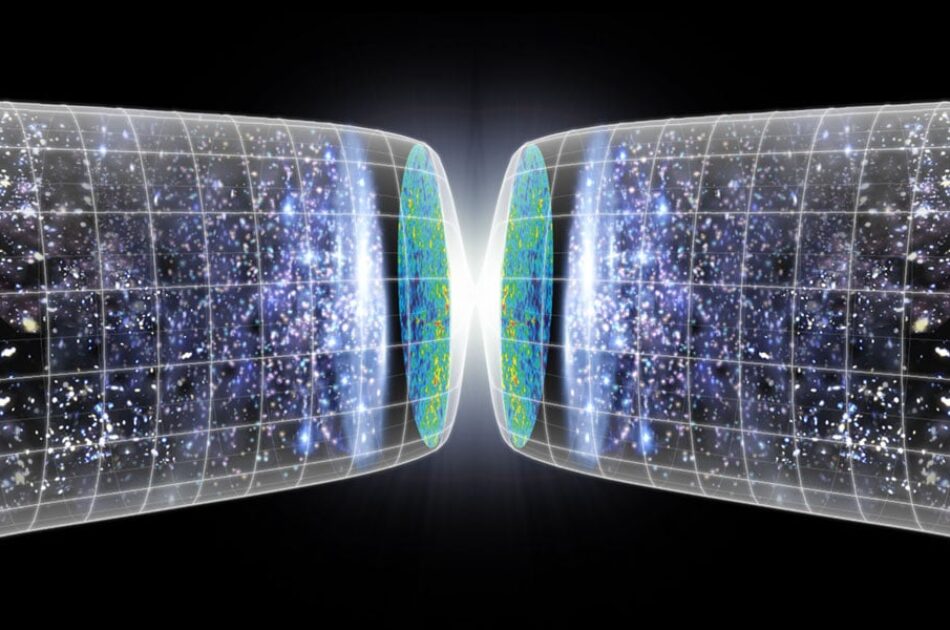
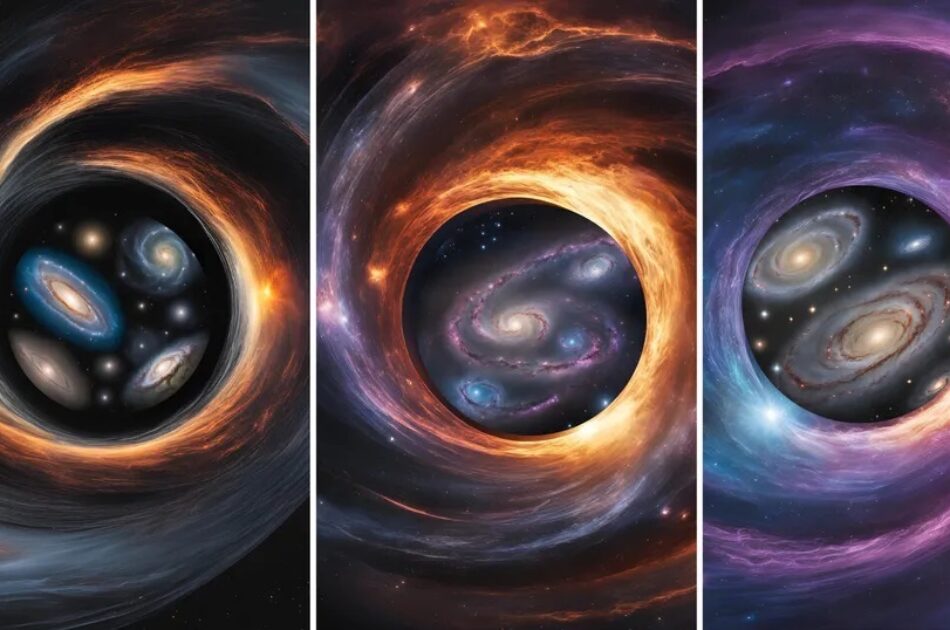
Telescope Observations
Radio
The brightest sources of low-frequency radio emission (10 MHz and 100 GHz) are radio galaxies which can be observed out to extremely high redshifts. These are subsets of the active galaxies that have extended features known as lobes and jets which extend away from the galactic nucleus distances on the order of megaparsecs. Because radio galaxies are so bright, astronomers have used them to probe extreme distances and early times in the evolution of the universe.
Infrared
Far infrared observations including submillimeter astronomy have revealed a number of sources at cosmological distances. With the exception of a few atmospheric windows, most of infrared light is blocked by the atmosphere, so the observations generally take place from balloon or space-based instruments. Current observational experiments in the infrared include NICMOS, the Cosmic Origins Spectrograph, the Spitzer Space Telescope, the Keck Interferometer, the Stratospheric Observatory For Infrared Astronomy, and the Herschel Space Observatory. The next large space telescope planned by NASA, the James Webb Space Telescope will also explore in the infrared.
An additional infrared survey, the Two-Micron All Sky Survey, has also been very useful in revealing the distribution of Galaxies, similar to other optical surveys described below.
Optical Rays (visible to Human eyes)
Optical light is still the primary means by which astronomy occurs, and in the context of cosmology, this means observing distant galaxies and galaxy clusters in order to learn about the large scale structure of the Universe as well as galaxy evolution. Redshift surveys have been a common means by which this has been accomplished with some of the most famous including the 2dF Galaxy Redshift Survey, the Sloan Digital Sky Survey, and the upcoming Large Synoptic Survey Telescope. These optical observations generally use either photometry or spectroscopy to measure the redshift of a galaxy and then, via Hubble's law, determine its distance modulo redshift distortions due to peculiar velocities. Additionally, the position of the galaxies as seen on the sky in celestial coordinates can be used to gain information about the other two spatial dimensions.
Very deep observations (which is to say sensitive to dim sources) are also useful tools in cosmology. The Hubble Deep Field, Hubble Ultra Deep Field, Hubble Extreme Deep Field, and Hubble Deep Field South are all examples of this.
Future Observations
Cosmic Neutrino Background
The Cosmic Neutrino Background (CNB) is a proposed background particle radiation composed of neutrinos. They are sometimes known as Relic Neutrinos or sometimes abbreviated CNB or CνB, where the symbol ν is the Greek letter nu, standard Particle Physics symbol for a Neutrino.
The CνB is a relic of the Big Bang; while the Cosmic Microwave Background radiation (CMB) dates from when the Universe was 379,000 Years Old, the CνB decoupled (separated) from matter when the Universe was just one second old. It is estimated that today, the CνB has a temperature of roughly 1.95 K.
As neutrinos rarely interact with matter, these Neutrinos still exist today. They have a very low energy, around 10−4 to 10−6 eV. Even high energy Neutrinos are notoriously difficult to detect, and the CνB has energies around 1010 times smaller, so the CνB may not be directly observed in detail for many years, if at all. However, Big Bang Cosmology makes many predictions about the CνB, and there is very strong indirect evidence that the CνB exists.
It is a prediction of the Big Bang model that the Universe is filled with a Neutrino background radiation, analogous to the Cosmic Microwave Background (CMB) radiation. The microwave background is a relic from when the Universe was about 380,000 Years Old, but the Neutrino background is a relic from when the Universe was about two seconds old.
If this neutrino radiation could be observed, it would be a window into very early stages of the Universe. Unfortunately, these Neutrinos would now be very cold, and so they are effectively impossible to observe directly.
Origin
The early Universe consisted of a very hot dense plasma which was expanding and thus cooling. Particles in the plasma collided and reacted, maintaining an equilibrium according to the possible reactions. Around 1 s after the Big Bang, the equilibrium among Electrons, Positrons, and Neutrinos was disrupted. Several annihilation reactions like e − + e + ⟷ ν e + ν ¯ e {\displaystyle {\text{e}}^{-}+{\text{e}}^{+}\longleftrightarrow \nu _{\text{e}}+{\bar {\nu }}_{\text{e}}} stopped because expansion left the Neutrinos too far apart on average to find each other. The neutrinos are said to be decoupled. Rather than colliding and reacting, they kept going, a state known as free streaming. Since the universe was almost perfectly homogeneous plasma, this decoupling happened throughout the Universe at the same time. These Neutrinos have been traveling in an ever expanding universe for over 13 Billion Years. Although vast in number their characteristic temperature is very low.
Gravitational Wave Background
The Gravitational Wave Background (also GWB and stochastic background) is a random background of gravitational waves permeating the Universe, which is detectable by gravitational-wave experiments, like Pulsar timing arrays. The signal may be intrinsically random, like from stochastic processes in the early Universe, or may be produced by an incoherent superposition of a large number of weak independent unresolved gravitational-wave sources, like Supermassive Black-Hole Binaries. Detecting the gravitational wave background can provide information that is inaccessible by any other means about astrophysical source population, like hypothetical ancient Supermassive Black-Hole Binaries, and early Universe processes, like Hypothetical Primordial Inflation and Cosmic Strings.
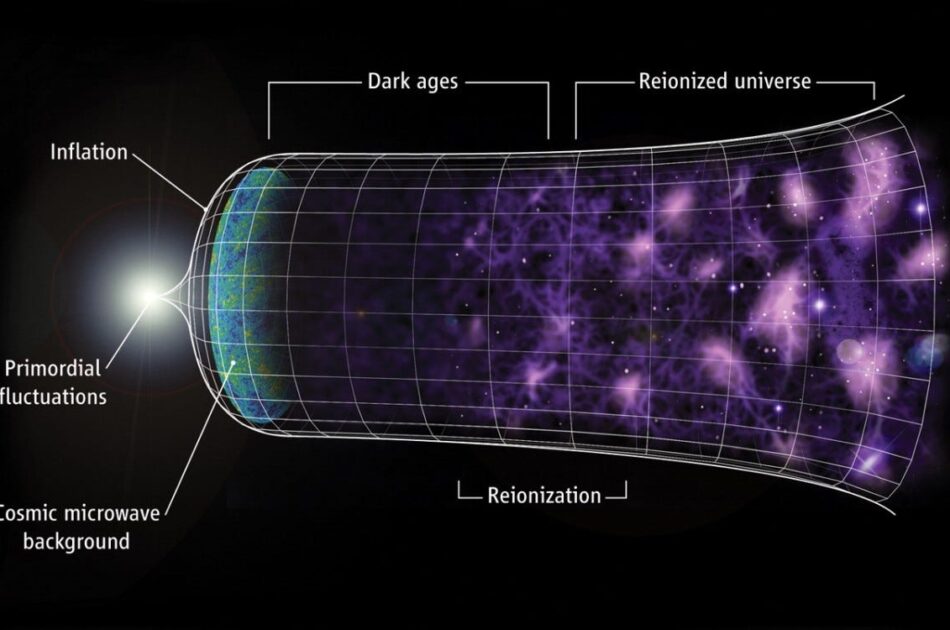
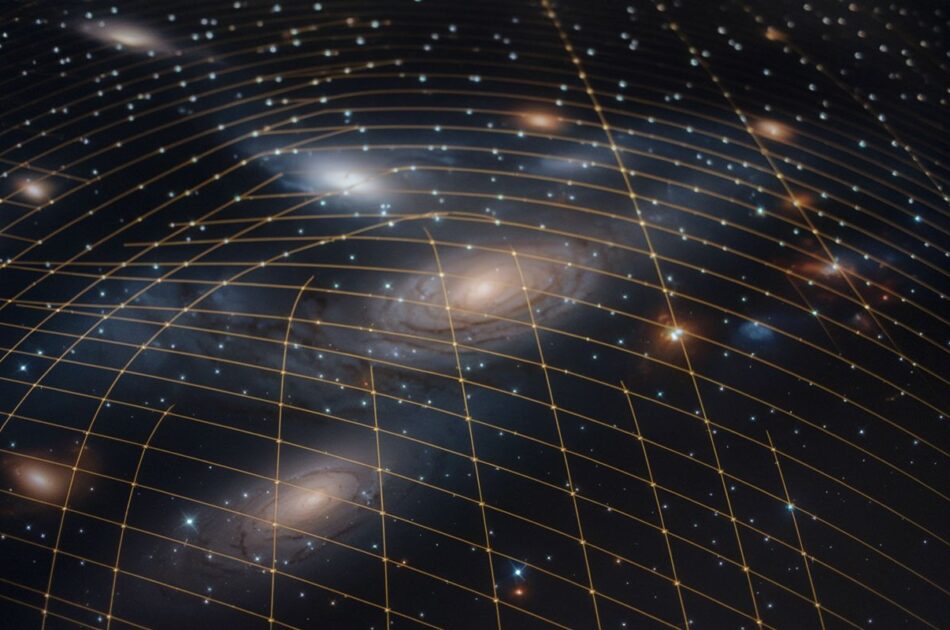
Sources of a Stochastic Background
Several potential sources for the background are hypothesized across various frequency bands of interest, with each source producing a background with different statistical properties. The sources of the stochastic background can be broadly divided into two categories: Cosmological Sources, and Astrophysical Sources.
Cosmological Sources
Cosmological backgrounds may arise from several early Universe sources. Some examples of these primordial sources include time-varying inflationary scalar fields in the early Universe, "preheating" mechanisms after inflation involving energy transfer from inflation particles to regular matter, cosmological phase transitions in the early Universe (such as the Electroweak Phase Transition), Cosmic Strings, etc. While these sources are more hypothetical, a detection of a primordial gravitational wave background from them would be a major discovery of new Physics and would have a profound impact on early-Universe Cosmology and on High-Energy Physics (HEP) / Particle Physics.
Astrophysical Sources
An Astrophysical Background is produced by the combined noise of many weak, independent, and unresolved astrophysical sources. For instance, the astrophysical background from stellar mass binary Black Hole mergers is expected to be a key source of the stochastic background for the current generation of ground based gravitational-wave detectors. LIGO and Virgo detectors have already detected individual gravitational-wave events from such Black Hole mergers. However, there would be a large population of such mergers which would not be individually resolvable which would produce a hum of random looking noise in the detectors. Other astrophysical sources which are not individually resolvable can also form a background. For instance, a sufficiently massive star at the final stage of its evolution will collapse to form either a black hole or a Neutron star—in the rapid collapse during the final moments of an explosive supernova event, which can lead to such formations, gravitational waves may theoretically be liberated. Also, in rapidly rotating neutron stars there is a whole class of instabilities driven by the emission of gravitational waves.
The nature of source also depends on the sensitive frequency band of the signal. The current generation of ground based experiments like LIGO and Virgo are sensitive to gravitational-waves in the audio frequency band between approximately 10 Hz to 1000 Hz. In this band the most likely source of the stochastic background will be an astrophysical background from binary Neutron-star and stellar mass binary Black-Hole mergers.
An alternative means of observation is using pulsar timing arrays (PTAs). Three consortia—the European Pulsar Timing Array (EPTA), the North American Nanohertz Observatory for Gravitational Waves (NANOGrav), and the Parkes Pulsar Timing Array (PPTA)—coordinate as the International Pulsar Timing Array. They use Radio Telescopes to monitor the galactic array of millisecond Pulsars, which form a galactic-scale detector sensitive to gravitational waves with low frequencies in the nanohertz to 100 nanohertz range. With existing telescopes, many years of observation are needed to detect a signal, and detector sensitivity improves gradually. Sensitivity bounds are approaching those expected for astrophysical sources.
Supermassive Black Holes with masses of 105–109 solar masses are found at the centers of Galaxies. It is not known which came first, Supermassive Black Holes or Galaxies, or how they evolved. When Galaxies merge, it is expected that their central Supermassive Black Holes merge too. These Supermassive Binaries produce potentially the loudest low-frequency gravitational-wave signals; the most massive of them are potential sources of a nanohertz gravitational wave background, which is in principle detectable by PTAs.
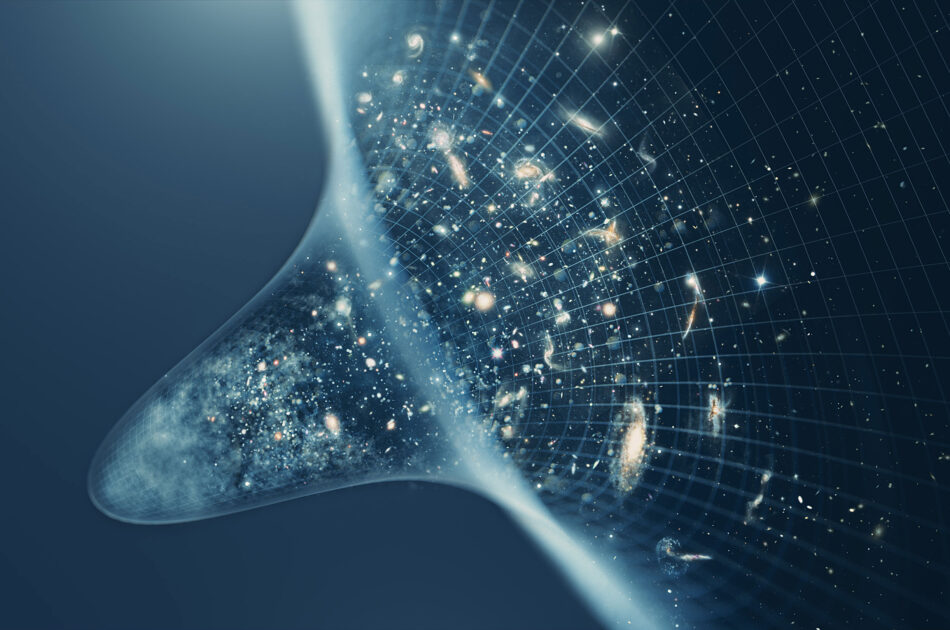
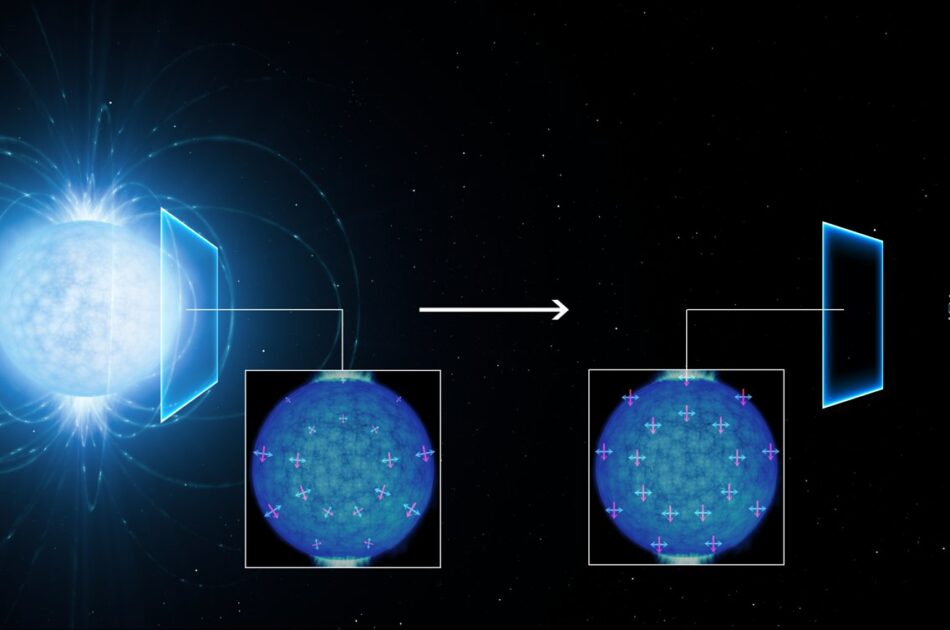
Detection
On 11 February 2016, the LIGO and Virgo collaborations announced the first direct detection and observation of gravitational waves, which took place in September 2015. In this case, two Black Holes had collided to produce detectable gravitational waves. This is the first step to the potential detection of a GWB.
On 28 June 2023, the North American Nanohertz Observatory for Gravitational Waves collaboration announced evidence for a GWB using observational data from an array of millisecond pulsars. Observations from EPTA,[17] Parkes Observatory[18] and Chinese Pulsar Timing Array (CPTA) were also published on the same day, providing cross validation of the evidence for the GWB using different telescopes and analysis methods. These observations provided the first measurement of the theoretical Hellings-Downs curve, i.e., the quadrupolar and higher multipolar correlation between two Pulsars as a function of their angular separation in the sky, which is a telltale sign of the gravitational wave origin of the observed background.
The sources of this gravitational-wave background cannot be identified without further observations and analyses, although binaries of Supermassive Black Holes are leading candidates.
Cosmic Background Radiation
Cosmic Background Radiation is electromagnetic radiation that fills all space. The origin of this radiation depends on the region of the spectrum that is observed. One component is the Cosmic Microwave Background (CMB). This component is redshifted photons that have freely streamed from an epoch when the Universe became transparent for the first time to radiation. Its discovery and detailed observations of its properties are considered one of the major confirmations of the Big Bang. Background radiation is largely homogeneous and isotropic. A slight detectable anisotropy is present which correlates to galaxy filaments and voids. The discovery (by chance in 1965) of the cosmic background radiation suggests that the early Universe was dominated by a radiation field, a field of extremely high temperature and pressure.
There is background radiation observed across all wavelength regimes, peaking in microwave, but also notable in infrared and X-ray regimes. Fluctuations in Cosmic Background Radiation across regimes create parameters for the amount of baryonic matter in the Universe.
The Sunyaev–Zel'dovich effect shows the phenomena of radiant cosmic background radiation interacting with "electron" clouds distorting the spectrum of the radiation
Black Hole Cosmology
A Black Hole Cosmology is a Cosmological Model in which the observable Universe formed within a Black Hole. This may be referred to as a Schwarzschild Cosmology or Black Hole Cosmological Model. Such models were originally proposed by Theoretical Physicist Raj Kumar Pathria, and concurrently by Mathematician I. J. Good. These ideas were presented as conjectures based on analogies, rather than derived from exact solutions of Einstein's Field Equations.
Subsequent studies by, among others, Nikodem Popławski, proposed that the observable Universe, formed inside a Black Hole, existed as one of possibly many inside a larger parent Universe, or Multiverse. However, some such models rely on speculative extensions to General Relativity Theory, such as torsion, and are not grounded in mainstream Physics.
Variants
Cosmological Natural Selection
According to Lee Smolin a collapsing black hole causes the emergence of a new Universe on the "other side". See Cosmological natural selection
Shockwave Cosmology
Shockwave cosmology, proposed by Joel Smoller and Blake Temple in 2003, has the "Big Bang" as an explosion inside a Black Hole, producing the expanding volume of space and matter that includes the observable Universe. This Black Hole eventually becomes a White Hole as the matter density decreases with the expansion. A related theory proposes that the acceleration of the expansion of the observable Universe, normally attributed to Dark Energy, may be caused by an effect of the shockwave.
Cosmology with Torsion
According to general relativity, the gravitational collapse of a mass into a sufficiently compact area forms into a Schwarzschild Black Hole. In the Einstein–Cartan–Sciama–Kibble theory of gravity, however, it forms a regular Einstein–Rosen Bridge, or Wormhole. Schwarzschild wormholes and Schwarzschild Black Holes are different mathematical solutions of general relativity and the Einstein–Cartan theory. Yet for observers, the exteriors of both solutions with the same mass are indistinguishable. The Einstein–Cartan theory extends General Relativity by removing a constraint of the symmetry of the affine connection and regarding its antisymmetric part, the torsion tensor, as a dynamical variable. Torsion naturally accounts for the Quantum-Mechanical, intrinsic angular momentum (spin) of matter. The minimal coupling between torsion and Dirac spinors generates a repulsive spin-spin interaction, which is significant in fermionic matter at extremely high densities. Such an interaction prevents the formation of a gravitational singularity. Instead, the collapsing matter reaches an enormous but finite density and rebounds, forming the other side of an Einstein-Rosen Bridge, which grows as a new universe. Accordingly, the Big Bang was a nonsingular Big Bounce at which the Universe had a finite, minimum scale factor.
Black Hole Universe
In 2025, a new model proposed a non-singular cosmological solution in which the Universe originates from the gravitational collapse of a finite over-density followed by a quantum bounce inside a black hole. This model, derived from an exact analytical solution to Einstein's equations combined with quantum degeneracy pressure, avoids a singularity and naturally generates a period of accelerated expansion. The resulting "Black Hole Universe" scenario suggests that our observable Universe could be the interior of such a Black Hole, with testable predictions such as a small positive spatial curvature and a non-zero cosmological constant.
Evidence
Any such model requires that the Hubble radius of the observable Universe be equal to its Schwarzschild Radius, that is, the product of its mass and the Schwarzschild Proportionality Constant. This is indeed known to be nearly the case, but might be a coincidence.
A paper, published in March 2025 claims that, of a sample of over 200 early Galaxies, around two thirds spin clockwise, whereas only half would be expected to do so. One possible explanation for this anomaly is that we might be inside a Black Hole; as all known Black Holes spin and this spin would influence any galaxies inside one. Alternatively it might be that the Cosmos spins slowly for some other reason, or there may be some problem with the data.
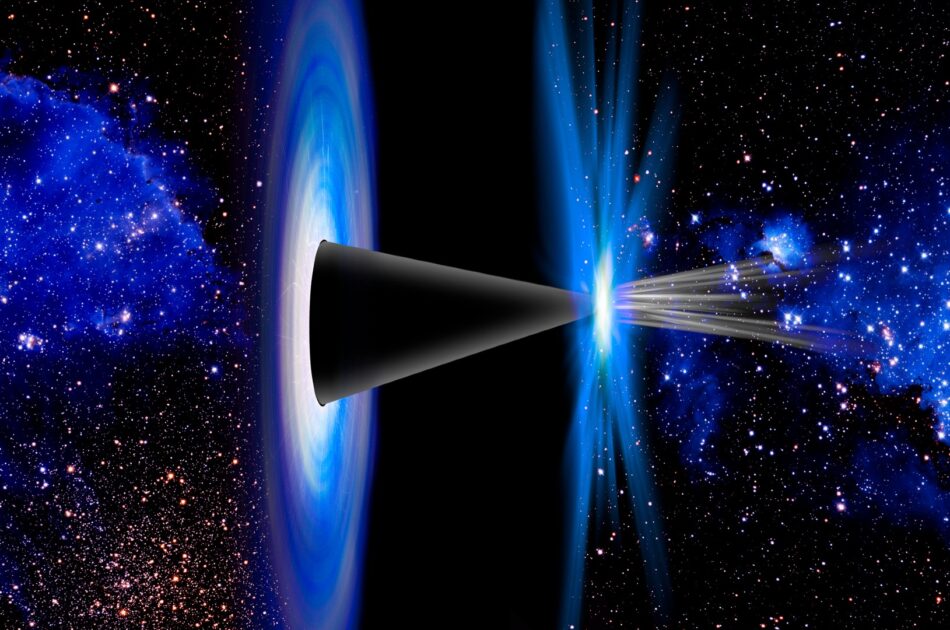
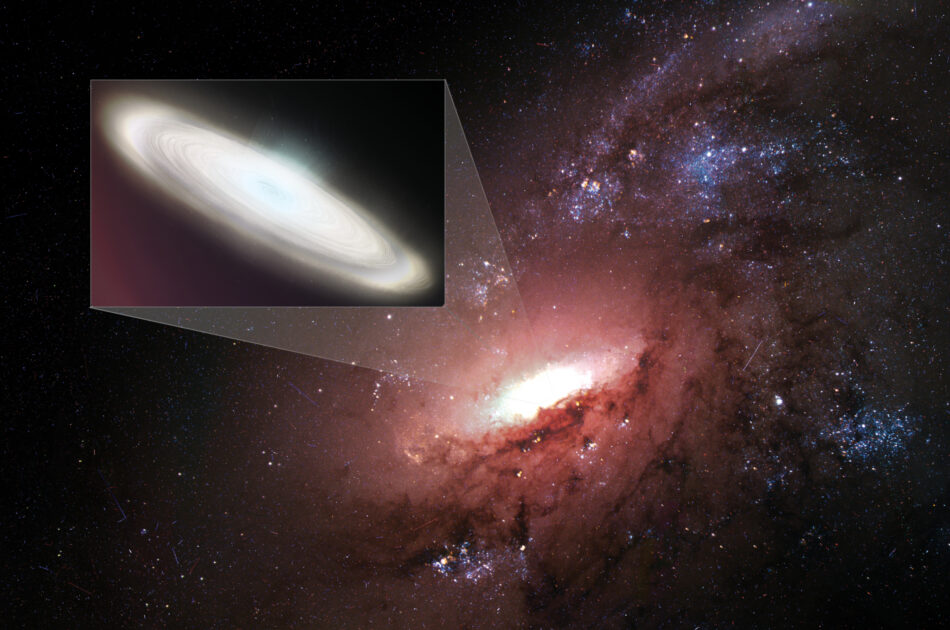
Quantum Cosmology
Quantum Cosmology is a theoretical physics approach that applies the principles of Quantum Mechanics to the entire Universe, particularly to its earliest moments and the largest structures. It aims to address questions that Classical Cosmology cannot, such as the Universe's origin and the nature of Spacetime at the Planck scale. Essentially, it treats the universe as a Quantum System, exploring how Quantum effects might have shaped its evolution.
Key Concepts of Quantum Mechanics and Cosmology:
Quantum Cosmology bridges the gap between the very small (Quantum Mechanics) and the very large (Cosmology).
Early Universe:
It's particularly concerned with the Universe's earliest moments, where Quantum effects are believed to have been dominant.
Singularities:
Quantum Cosmology seeks to resolve singularities like the Big Bang by incorporating Quantum effects, which might prevent Spacetime from collapsing to a point.
Wave Function of the Universe:
One approach represents the Universe as a Quantum Wave Function, describing its possible states and evolution.
Quantum Gravity:
It often relies on concepts from Quantum Gravity theories (like Loop Quantum Gravity (LQG) or String Theory) to describe the Universe at the Quantum level.
How it Differs from Classical Cosmology?
Classical Cosmology:
Relies on General Relativity and describes the Universe's evolution from a defined initial state, often the Big Bang.
Quantum Cosmology:
Explores the Universe's origins using Quantum Mechanics, potentially including scenarios like the Big Bounce or tunneling from a Quantum Vacuum.
Uncertainty:
Unlike Classical Cosmology, Quantum Cosmology acknowledges inherent uncertainties in the Universe's initial conditions and evolution.
Examples of Research Areas:
Inflation: Investigating the Quantum origins and nature of Cosmic Inflation.
Early Universe Dynamics:
Studying the Universe's behavior before and during the Planck epoch. Origin of structure: Exploring how Quantum fluctuations during inflation might have seeded the formation of Galaxies and larger structures. Resolving singularities: Seeking to avoid the singularities predicted by General Relativity by incorporating Quantum effects.
In essence, Quantum Cosmology is a quest to understand the Universe's fundamental nature by applying the laws of Quantum Mechanics to the Cosmos itself, particularly at its most extreme scales.

